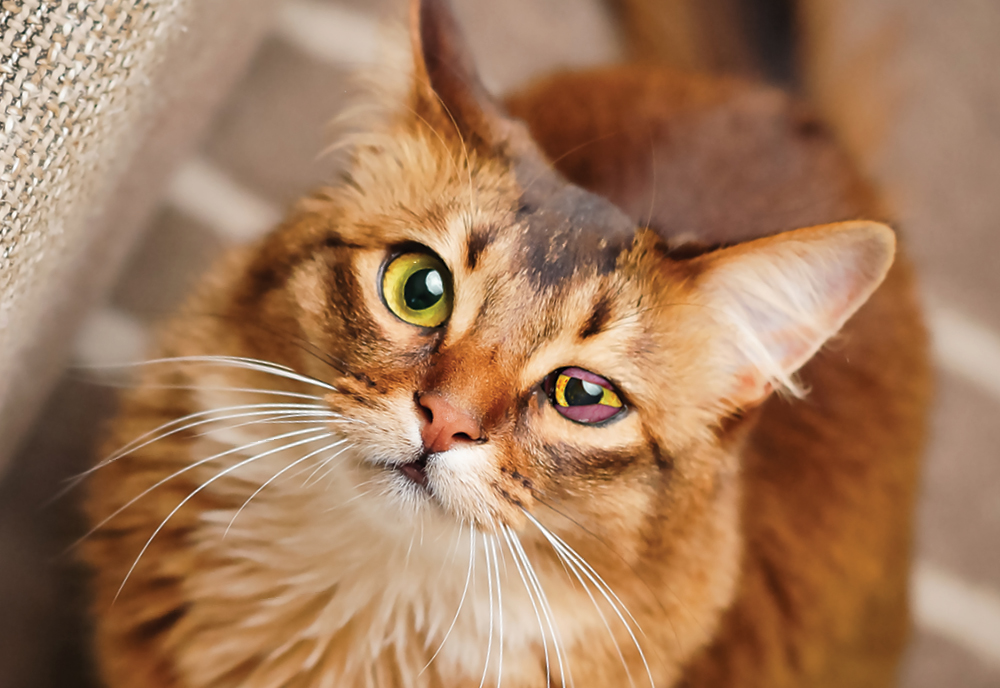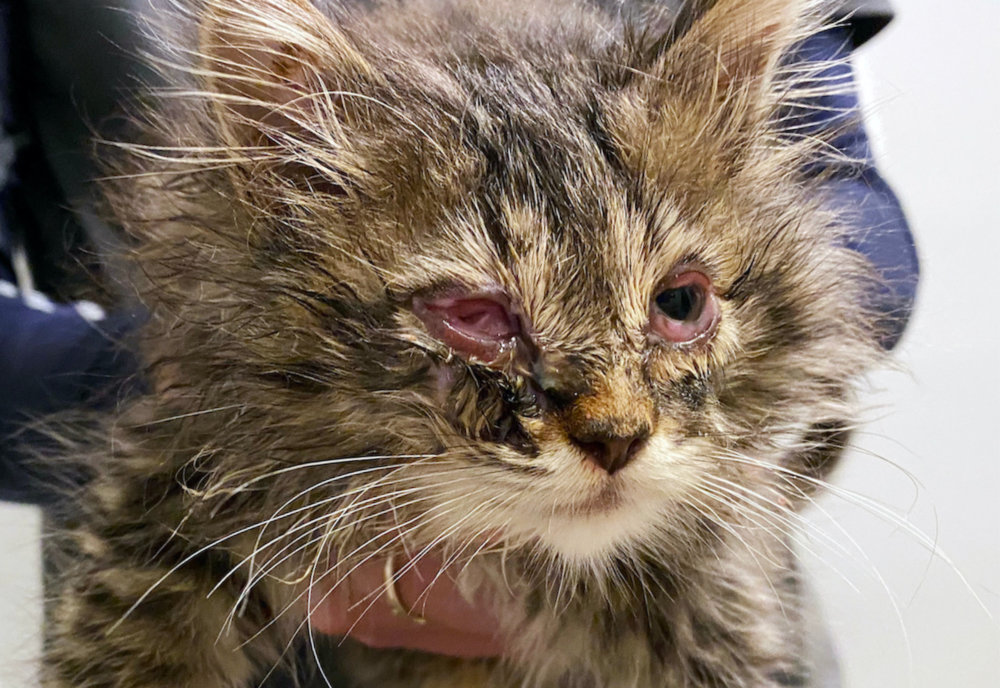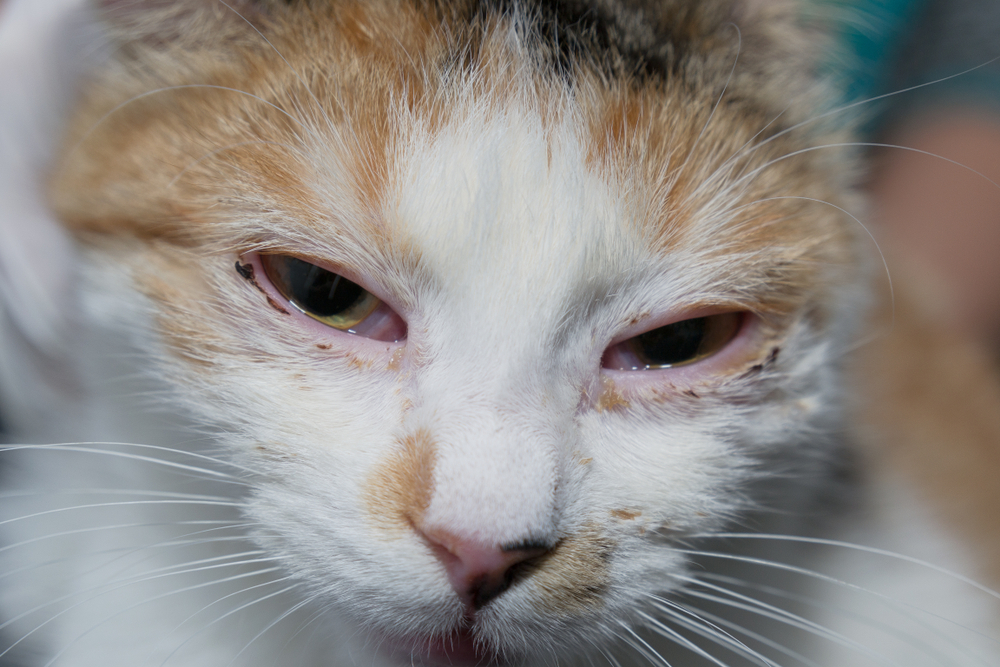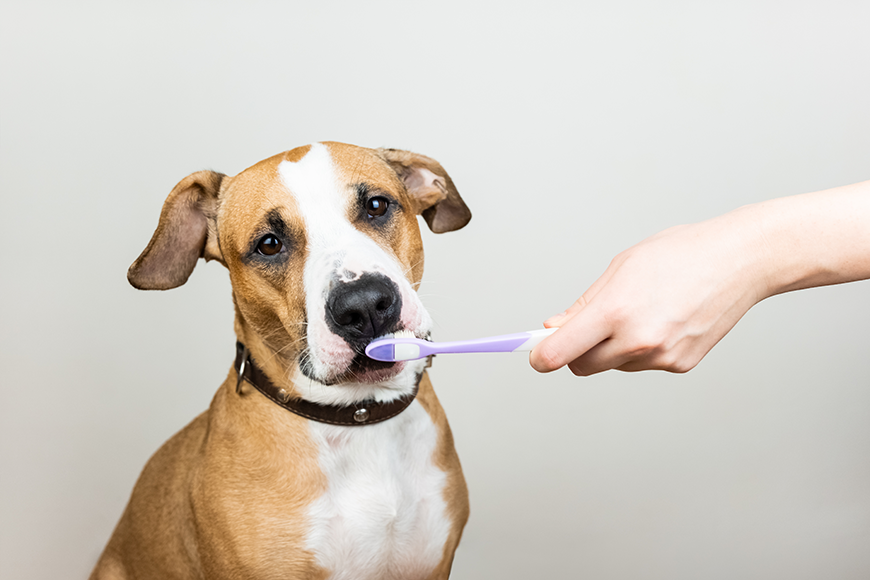Cats, our beloved feline companions, are not immune to health challenges like other living beings. Viral infections are significant among various health concerns that can affect cats. Feline herpes virus, scientifically called feline viral rhinotracheitis (FVR), is one of the most prevalent viral infections cats can contract. This contagious virus delves deep into a cat’s respiratory system, inducing a spectrum of symptoms that can be distressing.
As devoted cat owners and enthusiasts, understanding the intricacies of this virus becomes necessary, encompassing its origins, its impact on our feline friends, and the steps required to manage it effectively. The feline herpes virus is a member of the Herpesviridae family, including viruses that affect humans. Within this viral realm are two predominant strains responsible for impacting cats – feline herpesvirus type 1 (FHV-1) and feline calicivirus. While both contribute to cat respiratory illnesses, FHV-1 is the prime instigator of feline viral rhinotracheitis.
Herpes Virus in Cats
Feline herpes virus is a highly contagious infection that primarily affects the respiratory system of cats. It belongs to the family Herpesviridae and is closely related to the herpes virus that affects humans. Two primary virus strains commonly affect cats: feline herpesvirus type 1 (FHV-1) and feline calicivirus. FHV-1 is the primary cause of feline viral rhinotracheitis, while calicivirus contributes to cat respiratory illnesses. The transmission of this virus operates through various channels, predominantly involving direct contact with an infected cat or exposure to contaminated surfaces.
Unfortunately, the virus can also spread via respiratory droplets, establishing a network for its swift dissemination. Vulnerability to the virus is heightened among kittens, senior cats, and those whose immune systems face compromises. Environmental factors, such as overcrowding and unsanitary conditions, can also amplify the risk of transmission. When FVR takes hold, it exhibits a diverse range of symptoms ranging from mild to severe. Sneezing and nasal discharge are commonplace, along with the emergence of conjunctivitis, evident through watery or crusted eyes.
-
Transmission and Causes
The feline herpes virus spreads through contact with an infected cat, contaminated surfaces, or respiratory droplets. Kittens, senior cats, and those with compromised immune systems are more vulnerable to the virus. Stress, overcrowding, poor sanitation, and unhygienic conditions can increase the risk of transmission.
-
Symptoms of Feline Herpes Virus
Cats infected with FHV-1 can display a wide range of symptoms, which may vary in severity. Common symptoms include:
- Sneezing and nasal discharge
- Watery or crusty eyes (conjunctivitis)
- Coughing and wheezing
- Loss of appetite
- Lethargy and reduced activity
- Ulcerations on the tongue and oral cavity
- Elevated body temperature
- Excessive salivation
-
Diagnosing Feline Herpes Virus
A veterinarian with expertise in feline health plays a crucial role in accurately diagnosing the feline herpes virus. The diagnosis typically involves a comprehensive approach considering clinical observations and specialized diagnostic tests. This multifaceted approach helps ensure a precise understanding of the cat’s condition. Clinical symptoms serve as initial indicators of a potential feline herpes virus infection. These symptoms can range from sneezing and nasal discharge to more pronounced signs such as watery or crusty eyes, coughing, and lethargy. To confirm the presence of feline herpes virus and distinguish it from similar conditions, veterinarians often employ specific diagnostic tests.
Among these tests, viral culture is a significant tool. In this process, a sample from the cat’s nasal or ocular discharge is collected and placed in a controlled environment to allow the virus to grow. This growth is then identified, confirming the presence of the herpes virus. Polymerase chain reaction (PCR) testing is another advanced diagnostic method utilized. PCR detects the virus’s genetic material in the sample, enabling precise identification even in cases where the virus may be present in low quantities. This susceptible method helps confirm the diagnosis, especially during the early stages of infection. Serological testing focuses on detecting antibodies produced by the cat’s immune system in response to the virus.
This type of testing can provide insights into the cat’s exposure to the virus, whether it is a recent infection or a previous one. While serological testing doesn’t offer immediate confirmation of an active infection, it can aid in understanding the cat’s immune response. By combining clinical observations with these diagnostic tests, veterinarians can confidently diagnose feline herpes virus infections. This comprehensive approach ensures accurate diagnosis and guides appropriate treatment and management strategies tailored to the cat’s specific needs.
-
Treatment and Management
While there is no cure for feline herpes virus, supportive care can alleviate symptoms and help affected cats recover. Treatment options include:
- Antiviral Medications: These medications help control the replication of the virus, reducing the severity and duration of symptoms.
- Eye Drops: Eye drops or ointments can be prescribed to manage conjunctivitis and eye discomfort.
- Nutritional Support: Encouraging cats to eat and providing easily digestible, nutritious food can aid their recovery.
- Hydration: Keeping the cat well-hydrated is essential to manage fever and alleviate discomfort.
- Stress Reduction: Minimizing stress through a calm environment and proper handling can help support the immune system.
-
Preventive Measures
Preventing the spread of feline herpes virus involves practicing good hygiene and minimizing stressors that can trigger outbreaks. Some preventive steps include:
- Vaccination: Regular vaccination, including vaccines against feline herpesvirus, can help protect cats from severe symptoms.
- Isolation: Isolate infected cats from healthy cats to prevent transmission
- Hygiene: Regularly clean and disinfect living areas, litter boxes, and food bowls.
- Stress Management: Provide a stress-free environment, proper socialization, and mental stimulation to boost the cat’s immune system.
-
Long-Term Outlook
Most cats infected with the feline herpes virus will, unfortunately, experience recurrent outbreaks of the infection, especially during periods of heightened stress or illness. Various factors, such as environmental changes, the introduction of new animals, or other underlying health conditions, can trigger these recurrent episodes. During these episodes, the severity of symptoms can vary widely, ranging from mild sneezing and watery eyes to more severe respiratory distress and discomfort. Cat owners need to understand that while it’s not currently possible to eliminate the virus from an infected cat’s system, several effective management strategies can enhance the cat’s quality of life. These strategies focus on reducing the frequency and severity of outbreaks, alleviating discomfort, and promoting the cat’s overall physical and emotional well-being.
Conclusion:
Feline herpes virus is a common viral infection that affects the respiratory system of cats, causing discomfort and various symptoms. By understanding its causes, symptoms, and management strategies, cat owners can provide the best possible care for their feline companions. With proper preventative measures and supportive care, cats infected with the herpes virus can lead happy and comfortable lives, even in the face of recurrent outbreaks. Regular veterinary check-ups, vaccination, and a stress-free environment are vital to ensuring the well-being of our beloved feline friends.
Pet’s Mall and Pet Clinic
Pet’s Mall and Pet Clinic in Lahore is the best place for your pets. Dr. Sami is a fantastic vet there, and he has a super team and excellent equipment. If your pet needs help, this is the place to go. They have everything your pet might need and care about making it feel better. So, if your pet is sick or you need pet stuff, check out Pet’s Mall and Pet Clinic. Your pet will thank you!
CONTACT US:
34 Q Block, Johar Town, Shah Alam Road, Near Ayub Chowk, Lahore
0313-4343476
petsmallpk@gmail.com
Popular Post
How to choose a training
Top tips for caring for
Tips for keeping your cat
Archives
Tags
Email for newsletter
At Pets Mall, we offer premium quality dog and cat food, pet supplies, and vaccination. Get everything you need for your pet!
If you pets need immediate veterinary’s treatment, give us a call and we will send a specialist vet to your home.
- 34 Q Block, Johar Town, Shah Alam Road, Near Ayub Chowk , Lahore
- petsmallpk@gmail.com
- 0301-7475573 , 0313-4343476
COPYRIGHT © PetsMall.pk ALL RIGHTS RESERVED. | DEVELOPED BY DIGIKNOWN












